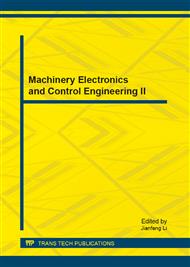[1]
JA. Momoh, ME. El-Hawary and RA. Adapa, Review of selected optimal power flow literature to 1993 Part I: nonlinear and quadratic programming approaches. IEEE Trans Power Syst 1999;14(1):96–104.
DOI: 10.1109/59.744492
Google Scholar
[2]
Momoh JA, El-Hawary ME and RA. Adapa, Review of selected optimal power flow literature to 1993 Part II: Newton,linear programming and interior point methods. IEEE Trans Power Syst 1999;14(1):105–11.
DOI: 10.1109/59.744495
Google Scholar
[3]
LL. Lai, JT. Ma, R. Yokoma and M. Zhao Improved genetic algorithms for optimal power flow under both normal and contingent operation states, Electrical Power & Energy System, Vol. 19, No. 5, pp.287-292, 1997.
DOI: 10.1016/s0142-0615(96)00051-8
Google Scholar
[4]
J. Yuryich and KP.Wong, Evolutionary programming based optimal power flow algorithm. IEEE Trans Power Syst 1999;14(4):1245–50.
DOI: 10.1109/59.801880
Google Scholar
[5]
MA. Abido, Optimal power flow using particle swarm optimization. Electric Power Energy Syst 2002;24:563–71.
DOI: 10.1016/s0142-0615(01)00067-9
Google Scholar
[6]
Samir Sayah and Khaled Zehar. Modified differential evolution algorithm for optimal power flow with non-smooth cost function. Energy conversion and Management 2009:49:3036-3042
DOI: 10.1016/j.enconman.2008.06.014
Google Scholar
[7]
N. Leeprechanon and P. Polratanasak, Multiobjective Bees Algorithm with clustering technique for environmental/economic dispatch, Proc. of International Conference on Electrical Engineering/Electronics Computer Telecommunications and Information Technology (ECTI-CON), May 2010, pp.621-625.
DOI: 10.1109/ecticon.2018.8619978
Google Scholar
[8]
Serhat Duman, Uğur Güvenç, Yusuf Sönmez and Nuran Yörükeren, Optimal power flow using gravitational search algorithm, Energy Conversion and Management, Volume 59, July 2012, pp.86-95.
DOI: 10.1016/j.enconman.2012.02.024
Google Scholar
[9]
Pham, D.T., S.Otri, E.Koc, A.Ghanbarzadeh, S.Rahim, M.Zaidi Technical Note. The Bees Algorithm., Manufacuring Engineering Centre, Cardiff University: Cardiff, UK. (2005)
Google Scholar
[10]
Blackwell T., Branke J., "Multi-swarm Optimization in Dynamic Environments", Lecture Notes in Computer Science 2004,489-500,Volume 3005
DOI: 10.1007/978-3-540-24653-4_50
Google Scholar


